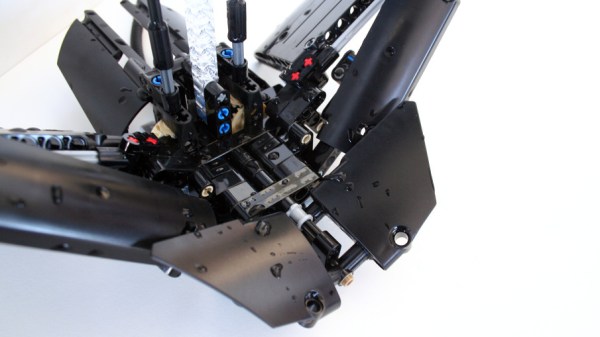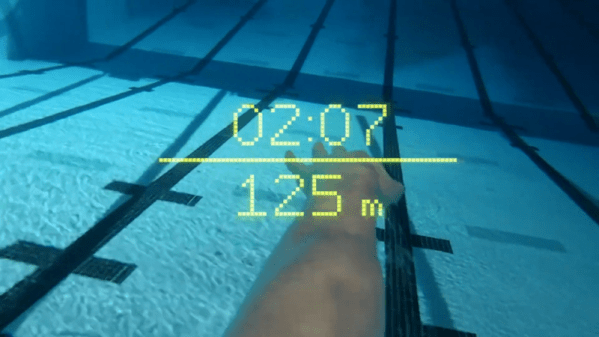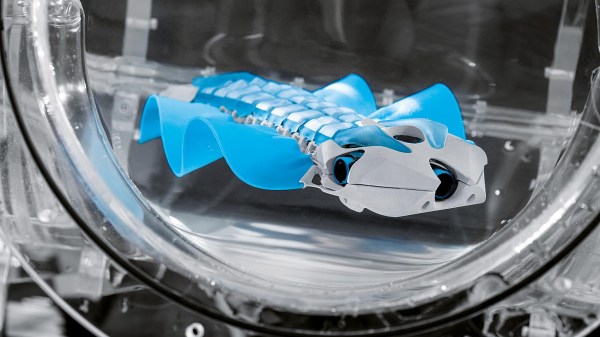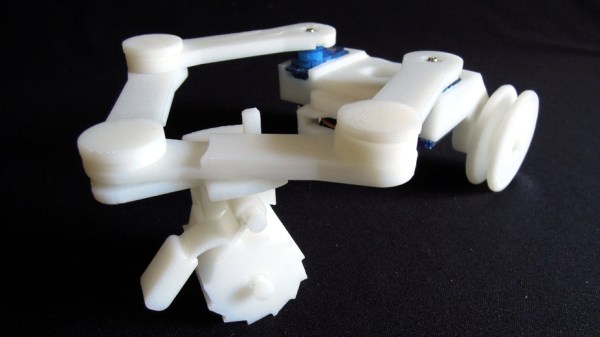Stingrays have an elegant, undulating swimming motion that can be hypnotic. [Vimal Patel] re-created this harmony with his fantastic mechanical mechanical stingray using LEGO pieces and a LEGO Technics Power Functions motor. The motor is set in a clever arrangement that drives the motion remotely, so that it and electrical elements can stay dry.
The mechanical stingray sits at the end of a sort of rigid umbilical shaft. This shaft connects the moving parts to the electrical elements, which float safely on the surface. This leaves only the stingray itself with its complex linkages free to move in the water, while everything else stays above the waterline.
We’ve seen some impressive LEGO creations before, like this race car simulator and pneumatic engine, and the mechanical action in this stingray is no exception. Interested in making your own? The part list and build directions are available online, and you can see it in action in the video embedded below.
Continue reading “Gaze Upon The Swimming Mechanical Stingray, Made With LEGO”






 What was their elegant solution for making the fins undulate? Nine lever arms are attached to each fin. Those lever arms are controlled by two crankshafts which extend from the front of the body to the rear, one for each side. A servo motor then turns each crankshaft. Since the crankshafts are independent, that means each fin operates independently. This allows for turning by having one fin move faster than the other. A third motor in the head flexes the body, causing the robot to swim up or down.
What was their elegant solution for making the fins undulate? Nine lever arms are attached to each fin. Those lever arms are controlled by two crankshafts which extend from the front of the body to the rear, one for each side. A servo motor then turns each crankshaft. Since the crankshafts are independent, that means each fin operates independently. This allows for turning by having one fin move faster than the other. A third motor in the head flexes the body, causing the robot to swim up or down.










